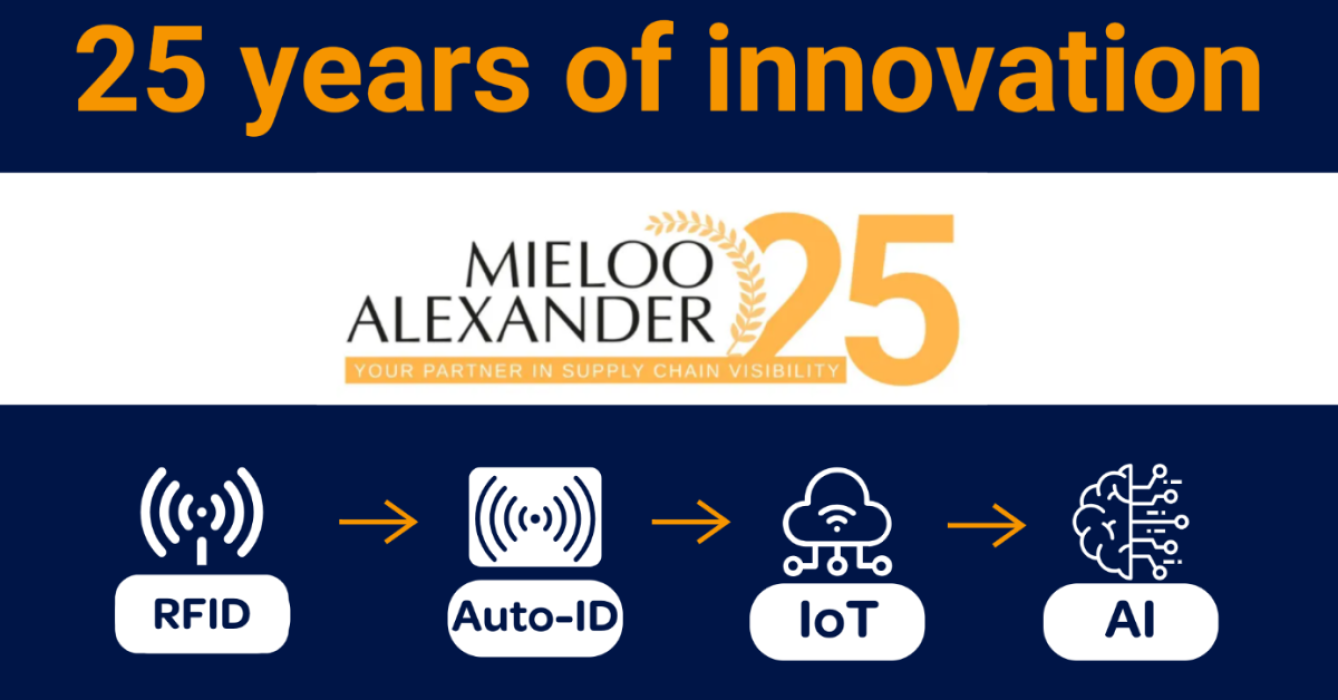For 25 years, Mieloo & Alexander has connected physical goods with usable digital data. What began as pioneering RFID work in warehouses and distribution centres has evolved into end-to-end supply chain visibility. Today we combine Auto-ID, IoT and AI logistics to not only see what is happening, but also to anticipate what will happen—and to help teams act on the next best action.
In the early years the focus was reliable identification: which item is where, when, and in what state? RFID brought speed and accuracy, with direct impact on inventory accuracy, search time and error reduction. We then broadened into architectures where barcodes, BLE and sensors work alongside RFID, and data is integrated via middleware into a single source of truth. In recent years, the question has shifted from “visibility” to “decision-making”: how do we translate signals and patterns into actions that improve daily operations?
From label to insight: 25 years of RFID, Auto-ID & track & trace
- It started with RFID pilots: item-level identification and faster cycle counts. Track & trace became the foundation for operations and reporting.
- Auto-ID and IoT (RFID, barcodes, BLE and sensors) operate under one standardised data model and platform. This provides real-time status such as temperature, movement and location.
- By fusing data from systems, you get one reliable view of inventory, assets and flows—dashboards become more actionable in day-to-day work.
- With AI logistics we make three leaps: earlier anomaly detection, better predictions (replenishment, lead time, bottlenecks) and practical recommendations for the next best action.
You notice this evolution in practice. In retail, accurate counting increases availability and reduces shrinkage. In logistics, time-consuming search work disappears and throughputs are smoother. In manufacturing, WIP is more visible, deviations are addressed earlier and lines stay up more consistently. This only works with disciplined data: standards, label quality and process agreements ensure that insights are correct today and scalable tomorrow, the basis for sustainable supply chain visibility.
Lessons for the future of supply chain visibility
- Start with the business need, not the technology: tie each step to a concrete KPI problem.
- Data quality first: standards, governance, privacy and security make the picture trustworthy.
- Integrate with processes and teams: adoption ultimately determines the ROI.
- Measure impact: link KPIs such as errors, search time and service level to every initiative.
From visibility to foresight: AI logistics and predictive supply chains
The next step is foresight: not only looking back, but using models that learn from history and real-time signals. That makes replenishment smarter, planning more stable and risk management more proactive. It requires consistent data, context (seasonality, lead times, sensor data) and feedback loops between people and systems. That’s why we work iteratively: start small where the pain is highest, learn fast, then scale.
Innovation is not a sprint. Technology helps, but impact happens when operators, planners and managers can rely on it every day. That’s the bridge we’ve built for 25 years: from label to insight, from track & trace to actionable supply chain visibility and now towards AI-driven supply chains.

